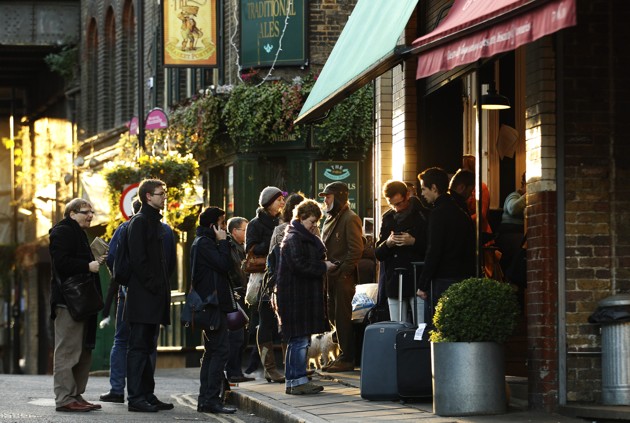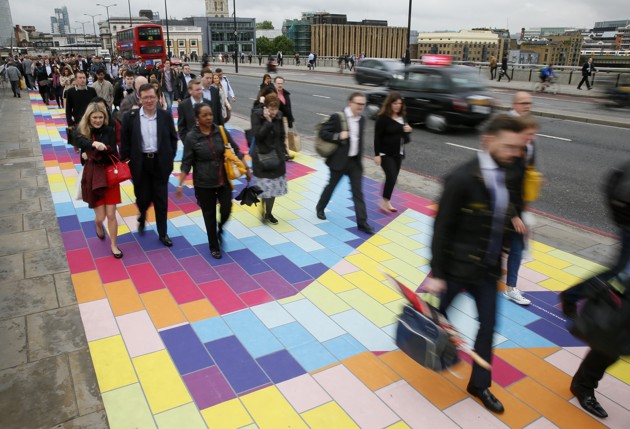Amid a flurry of other comments after the London attack, the president of the United States tweeted the following:
Do you notice we are not having a gun debate right now? That's because they used knives and a truck!
— Donald J. Trump (@realDonaldTrump) June 4, 2017
OK, so let’s talk about guns.
Here’s a picture of London’s Borough Market on a more typical day in 2011.
Here’s a scene of foot traffic on London Bridge leading to Borough Market.
On a pleasant summer evening, tens of thousands of Londoners walk through or enjoy themselves in the neighborhood the terrorists attacked. Three men armed with high-capacity firearms would not have killed seven and wounded 48: They would have killed hundreds or even more. British police could use their firepower advantage to kill the three terrorists in eight minutes. Had the terrorists been equally armed, who knows what the outcome of the gun battle might have been?
British law tightly restricts guns. Would-be gun owners must apply for permission, explaining their reasons for wanting a firearm and producing references to their mental stability and good character. They must prove that their weapons will be safely stored. Weapons that fire bullets, as opposed to shot, may only be used only in pre-approved places: a deer-stalking reserve for example or a certified shooting range. The result, according to the BBC:
[In England and Wales] there are 138,728 people certificated to hold firearms and they own 435,383 weapons. There are 574,946 shotgun certificates which cover 1.4 million shotguns.
Statistics for Scotland show that 70,839 firearms were held by 26,072 certificate holders at the end of last year. Some 50,000 people in Scotland are certificated to hold shotguns - and 137,768 weapons are covered by that scheme.
Illegal weapons do circulate of course in the U.K. To obtain them, however, a would-be terrorist would need both considerable cash (a black-market Glock costs upward of 2,000 pounds) and access to an organized criminal network. A self-radicalized amateur jihadi will lack both. In only one of all the completed and attempted Islamic terrorist atrocities in the U.K. since 9/11 did the killers even carry a single gun: a 90-year-old Dutch revolver so battered that they never tried to use it.
Over time, it seems that weapons are becoming harder to obtain. Firearms offenses of all kinds have tumbled from 24,094 in 2004 to 7,866 in 2015. The majority of the 2015 offenses involved what police call “junk guns”: Weapons originally built for other purposes—firing tear-gas cartridges for example—then re-engineered to shoot a bullet.
British tabloids made big news out of the seizure in 2014 of a huge cache of illegal arms: 453 weapons and 200,000 rounds of ammunition from an obsessive gun collector. More typical of the state of the market is the second-largest seizure: 31 rifles and 1,000 rounds in 2013.
Americans would not tolerate British-style rules, nor perhaps should they. But it’s utterly far-fetched to argue—as President Trump seems to be arguing—that Britain would be more safe from terrorism if the London Bridge killers could have obtained an American-style arsenal, or if the targets of the attack had carried weapons of their own, filling the crowded space with hundreds of rounds of panicky return fire.

